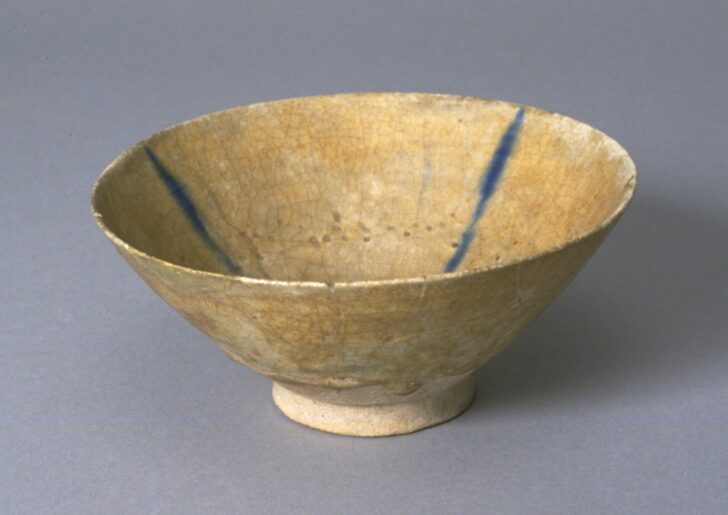Conical Bowl with simple blue stripe design
Iranian

Description
Cobalt, an ore often found in combination with iron, copper, or nickel, was known to the Mediterranean world and ancient Iranians as a colorant for glass, producing a deep blue color. Cobalt is abundant in Iran and Central Asia, and potters there began experimenting with blue glazes at a very early stage.
Subject Matter:
Cobalt, an ore often found in combination with iron, copper, or nickel, was known to the Mediterranean world and ancient Iranians as a colorant for glass, producing a deep blue color. Cobalt is abundant in Iran and Central Asia, and potters there began experimenting with blue glazes at a very early stage.
Physical Description:
This Kashan style bowl comes from the Seljuk period in Iran. The bowl features a simplified design of thin cobalt blue stripes that radiate from the interior foot to the rim. The overall bowl is done on a tan ground with a slightly green coloring. The bowl is either late 12th or early 13th century Seljuk pottery.
Usage Rights:
If you are interested in using an image for a publication, please visit https://umma.umich.edu/request-image/ for more information and to fill out the online Image Rights and Reproductions Request Form.